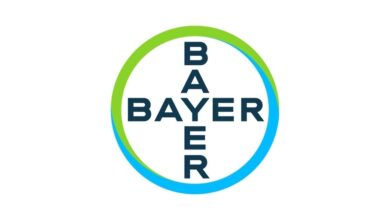Postpartum Depression Market Insight, Epidemiology and Market Forecasts, 2018-2020 & 2021-2030 – ResearchAndMarkets.com

DUBLIN–(BUSINESS WIRE)–The “Postpartum Depression – Market Insight, Epidemiology and Market Forecast – 2030” report has been added to ResearchAndMarkets.com’s offering.
The Postpartum Depression (PPD) market report provides current treatment practices, emerging drugs, and market share of the individual therapies, current and forecasted 7MM Postpartum Depression (PPD) market size from 2018 to 2030. The report also covers current Postpartum Depression (PPD) treatment practice/algorithm, market drivers, market barriers and unmet medical needs to curate the best of the opportunities and assesses the underlying potential of the market.
Postpartum Depression (PPD) Epidemiology
The disease epidemiology covered in the report provides historical as well as forecasted epidemiology segmented by Total Diagnosed Prevalent Population of Maternal Postpartum Depression and Type-specific Diagnosed Prevalence of Postpartum Depression scenario of Postpartum Depression (PPD) in the 7MM market covering the United States, EU5 countries (Germany, France, Italy, Spain, and United Kingdom) and Japan from 2018 to 2030.
Key Findings
This section provides glimpse of the Postpartum Depression (PPD) epidemiology in the 7MM.
- The total diagnosed prevalent population of Postpartum Depression in the United States was 621,340 in 2020.
- In the United States, the total diagnosed prevalent population of Postpartum Depression is estimated to increase at a CAGR of 0.60%, during the study period 2018-2030.
- The publisher has also made analysis on the various types of depression that occur post pregnancy such as Baby Blues, Postpartum Psychosis, Postpartum OCD, Posttraumatic stress disorder (PTSD) and Postpartum Panic Disorder. In the United States, the number of cases of these disorders were 2,067,000, 62,010, 206,700, 413,400 and 289,380, respectively in 2020.
Postpartum Depression (PPD) Market Outlook
According to the American Psychiatric Association (APA), Postpartum depression (PPD) is a serious, but treatable medical illness, which involves feelings of extreme sadness, emotional liability, indifference and/or anxiety, as well as changes in energy, sleep, and appetite, and carries risks for the mother and the newborn child. PPD usually starts within the first month or any time within the first year after childbirth and can last from weeks to months. In more severe cases, it can develop into chronic episodes of depression.
Treatments include the antidepressant medications along with the new upcoming therapeutic strategies that work on the principle of GABAA receptor modulation. The medical management for PPD comprises several aspects such as interventions for depression, anxiety disorders, alcohol and drug abuse, and psychological interventions for eating disorders. The treatment strategy also encompasses psychological and psychosocial treatments, as well as non-pharmacologic treatments. Besides, the medical care of a PDD patient and his family is incomplete without providing a support system for their psychosocial wellbeing. The current US market consists of only one approved product – Zulresso (brexanolone/SAGE-547) – to treat patients with PPD. Zulresso, which is marketed by Sage Therapeutics, was approved by the US FDA, in March 2019.
The PPD market outlook of the report helps to build a detailed comprehension of the historic, current and forecasted PPD market trends by analyzing the impact of current therapies on the market, unmet needs, drivers and barriers, and demand of better technology.
This segment gives a thorough detail of PPD market trend of each marketed drug and late-stage pipeline therapy by evaluating their impact based on annual cost of therapy, inclusion and exclusion criteria’s, mechanism of action, compliance rate, growing need of the market, increasing patient pool, covered patient segment, expected launch year, competition with other therapies, brand value, their impact on the market and view of the key opinion leaders. The calculated market data are presented with relevant tables and graphs to give a clear view of the market at first sight.
Key Topics Covered:
1 Key Insights
2 Postpartum depression (PPD) Market Overview at a Glance
2.1 Market Share (%) Distribution of Postpartum depression (PPD) in 2018
2.2 Market Share (%) Distribution of Postpartum depression (PPD) in 2030
3 Disease Background and Overview: Postpartum depression (PPD)
3.1 Introduction
3.2 Clinical Presentation
3.3 Risk Factors
3.4 Pathogenesis
3.5 Diagnosis and Screening
3.5.1 Diagnostic Criteria
4 Epidemiology and Patient Population
4.1 Key Findings
4.1 7MM Total Diagnosed Prevalent Population of Postpartum Depression (PPD)
5 Country-Wise Epidemiology of Postpartum Depression (PPD)
5.1 United States
5.1.1 Assumptions and Rationale
5.1.2 Total Diagnosed Prevalent Population of Maternal Postpartum Depression in the United States
5.1.3 Type-specific Diagnosed Prevalence of Postpartum Depression in the United States
5.2 EU5 Countries
5.3 Germany
5.4 France
5.5 Italy
5.6 Spain
5.7 United Kingdom
5.8 Japan
6 Treatment
6.1 Antidepressant medication
6.2 Psychological and psychosocial treatments
6.3 Non-pharmacologic treatments
6.4 Hormone therapy
7 Treatment Algorithm by American Family Physician (AFP)
8 Treatment Guidelines by Unicare
9 Treatment Guidelines by the National Institute for Health and Care Excellence (NICE)
10 Recognized Establishments
11 Unmet Needs
12 Marketed Profile
12.1 Zulresso (brexanolone): Sage Therapeutics
12.4 Zuranolone (SAGE-217): Sage Therapeutics
13 Postpartum Depression: 7 Major Market Analysis
13.1 Key Findings
13.2 Market Size of Postpartum Depression in the 7MM
14 The United States Market Outlook
14.1 United States Market Size
14.1.1 Total Market size of Postpartum Depression
14.1.2 Market Size by Therapies
14.2 EU-5 Countries: Market Outlook
14.1 Germany
14.2 France
14.3 Italy
14.4 Spain
14.5 United Kingdom
15 Japan: Market Outlook
15.1 Japan market Size
15.1.1 Total Market Size of Postpartum Depression
15.1.2 Market Size by Therapies
16 KOL Reviews
17 Case Reports
17.1. Patient Story: Postpartum Depression (American Psychiatric Association)
17.2. Case Study: The Effectiveness of Kangaroo Care for a Patient with Postpartum Depression and Comorbid Mother-Infant Bonding Disorder
18 Market Drivers
19 Market Barriers
20 SWOT Analysis
21 Appendix
For more information about this report visit https://www.researchandmarkets.com/r/5399rn
Contacts
ResearchAndMarkets.com
Laura Wood, Senior Press Manager
[email protected]
For E.S.T Office Hours Call 1-917-300-0470
For U.S./CAN Toll Free Call 1-800-526-8630
For GMT Office Hours Call +353-1-416-8900


